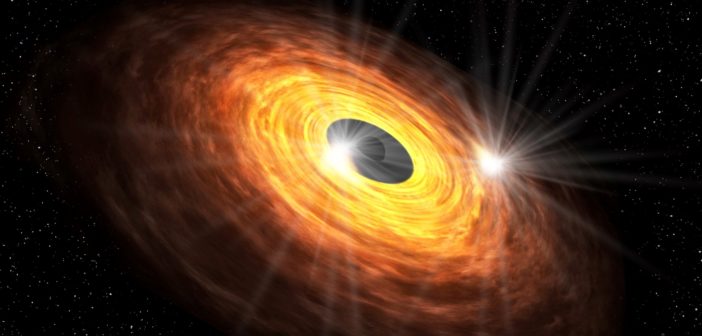Editor’s note: In these last two weeks of 2020, we’ll be looking at a few selections that we haven’t yet discussed on AAS Nova from among the most-downloaded papers published in AAS journals this year. The usual posting schedule will resume in January.
Time Variations in the Flux Density of Sgr A* at 230 GHz Detected with ALMA
Published April 2020
Main takeaway:
Recent observations show that the supermassive black hole at the center of the Milky Way, Sagittarius A*, flickers on a regular timescale of 30 minutes, with slower variations on hour-long timescales. The observations of this twinkling are presented in a publication led by Yuhei Iwata (Keio University).
Why it’s interesting:
The twinkles around this 4-million-solar-mass black hole, detected at millimeter wavelengths within 700 minutes of ALMA data across 10 days, may be caused by radio hot spots in the inner disk of material falling onto Sgr A*. Because this material is moving at incredibly high speeds, emitted photons from hot spots get a boost that make them shine brightly enough for us to detect. If this picture is correct, we can use our observations of these flickers to learn more about the strange physics that occurs close in around black holes.
Why this matters for imaging:

The first detailed image of a black hole, M87*, taken with the Event Horizon Telescope. [Adapted from EHT collaboration et al 2019]
Citation
Yuhei Iwata et al 2020 ApJL 892 L30. doi:10.3847/2041-8213/ab800d

